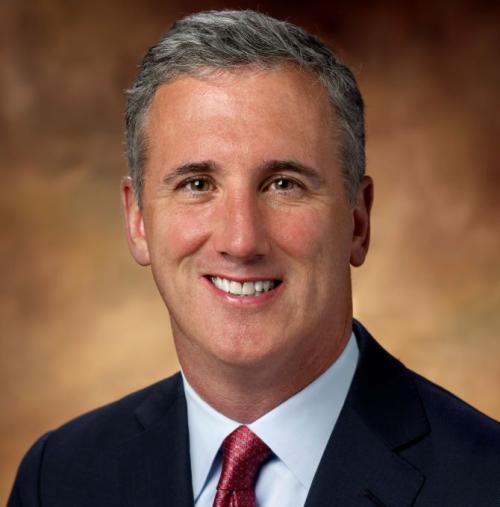But shareholders said to appreciate improved corporate access and are supportive in say-on-pay votes

RJ Bannister
Median total compensation for the CEOs of some of the largest companies in the US rose by 6 percent in 2016 despite flat corporate performance, new research shows as companies tackle proxy season and potential votes on executive pay.
CEOs saw their salaries and bonuses increase by 2 percent and 5 percent, respectively, for the second year running, according to proxy statement analysis of 365 S&P 1500 companies by Willis Towers Watson. The grant-date value of long-term incentives accounts for the majority of the rise in median total compensation, along with pension valuations. The 6 percent rise in total compensation follows a 4 percent increase in 2015.
However, the S&P 1500 recorded virtually flat financial performance during 2016 – with virtually no year-on-year movement in terms of revenue growth, earnings per share and earnings before interest and taxes.
Uneven financial performance is to be expected amid the uncertainty of an election year, particularly following a two-term president, according to RJ Bannister (pictured), leader of Willis Towers Watson’s executive compensation consulting practice in North America. ‘Both 2000 and 2008 were relatively unsettling from a performance perspective because companies were a little hesitant in relation to capital spending,’ he tells Corporate Secretary.
Just under a quarter of companies (23 percent) acknowledged the election year environment in advance when setting CEO performance targets for 2016, with at least one performance metric being lowered. This led to a marginal increase (1 percent) in the number of companies paying their CEOs annual incentive awards for achieving or exceeding targets in 2016, compared to 2015. ‘Companies were a little more reticent when setting targets and, my guess is, they added a little more forgiveness, which is why they performed at or above target,’ Bannister says.
SHAREHOLDER SUPPORT
The only measure of financial performance that grew significantly last year was total shareholder value – which saw a 16 percent increase. ‘Half of that increase came in the post-election two months,’ Bannister says. ‘The market is building in the fact that performance is expected to be higher in 2017.’
Willis Towers Watson also examined the 165 Russell 3000 companies that disclosed their shareholder voting results by March 31. Among those firms, support for say-on-pay resolutions averaged 92 percent.
‘The dialogue between management and shareholders is probably as good as it’s ever been,’ Bannister says. ‘It’s not uncommon for a company to meet with its 15 largest shareholders in the summer and spend up to half a day with each of them, bringing the CEO, CFO [and] head of [human resources]. They will talk through their strategy and how they’ve designed their executive compensation programs.’
As a result of this feedback, 57 percent of companies have enhanced their compensation discussion and analysis disclosure, 46 percent have changed metrics and 32 percent have adjusted their long-term incentive mix, according to Willis Towers Watson.
CEO VERSUS WORKER PAY
CEO salary increases (2.5 percent median annual rise) have been slightly lower than salary growth for the average US employee (2.9 percent median annual rise) over the last five years.
But CEOs’ total pay increase – which includes base salary; annual and long-term cash bonuses; other long-term incentives, such as stock options, restricted stock and long-term performance shares; executive pensions; and earnings from deferred compensation – is much higher, at 4.8 percent.
While the Dodd-Frank Act moved to reform executive pay disclosure in the US (CorporateSecretary.com, 4/13), there is still a wide chasm of pay inequality. A separate study by the Economic Policy Institute in 2015 found that the CEO-to-worker pay ratio increased from 20-to-1 in 1965 to 303-to-1 in 2014.
‘We will continue to hear about the pay gap in the US until we see more significant changes in the average worker’s pay check,’ Bannister says. ‘We have lived through a prolonged and protracted period of low growth and a low inflationary environment, and that has manifested itself in relatively flat salary growth.’
Median US salary increase versus median CEO pay increase
| Median US salary increase | Median US CEO salary increase | Median US CEO total pay increase | |
|---|---|---|---|
| 2012 | 2.8% | 2.8% | 1.2% |
| 2013 | 2.8% | 2.7% | 0.5% |
| 2014 | 2.9% | 2.9% | 12.1% |
| 2015 | 2.9% | 2.0% | 4.0% |
| 2016 | 2.9% | 2.0% | 6.0% |
Source: Willis Towers Watson
DEREGULATION AND THE BOARD
President Donald Trump has targeted tax reform, deregulation and the repeal of Dodd-Frank as priorities for his first term. Although the timeframe for all three is unclear, Bannister says Trump’s pro-business stance has led to the expectation of growth, which, in turn, will have a knock-on effect on executive compensation.
‘The expectation almost across the board is higher in terms of performance,’ he says. ‘Lower taxes may also impact the way companies set their performance metrics.’
But he cautions that deregulation places a greater burden on the board of directors and the information flow between the board and the C-suite, adding: ‘In a less-regulated environment, it is going to be incumbent on the board to manage and understand the business risks the company is facing and deal with them early on. Is the board truly getting the information it needs from further down in the organization?’
Willis Towers Watson warns that compensation committees should be reviewing their clawback policies in light of the potential regulatory changes.









